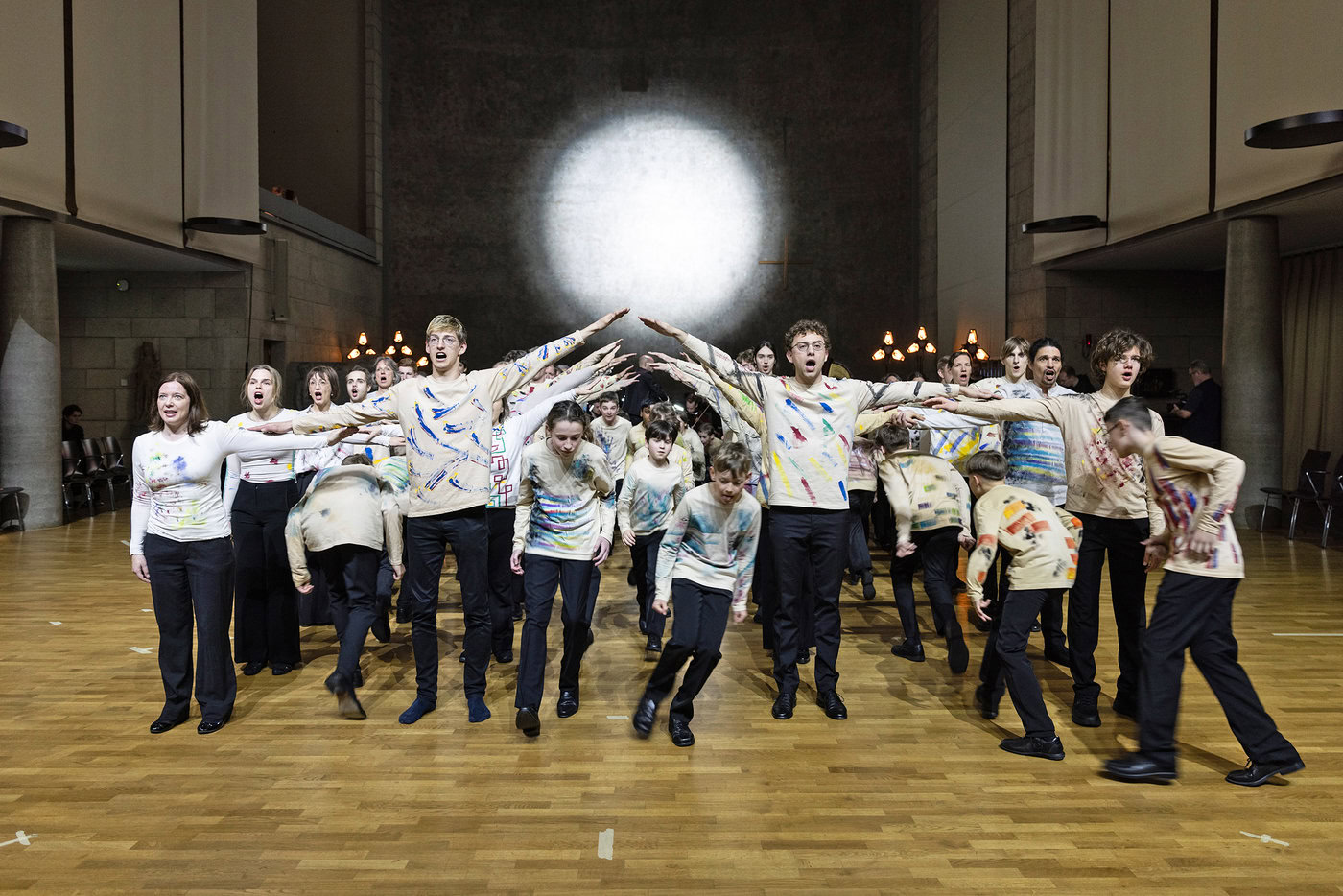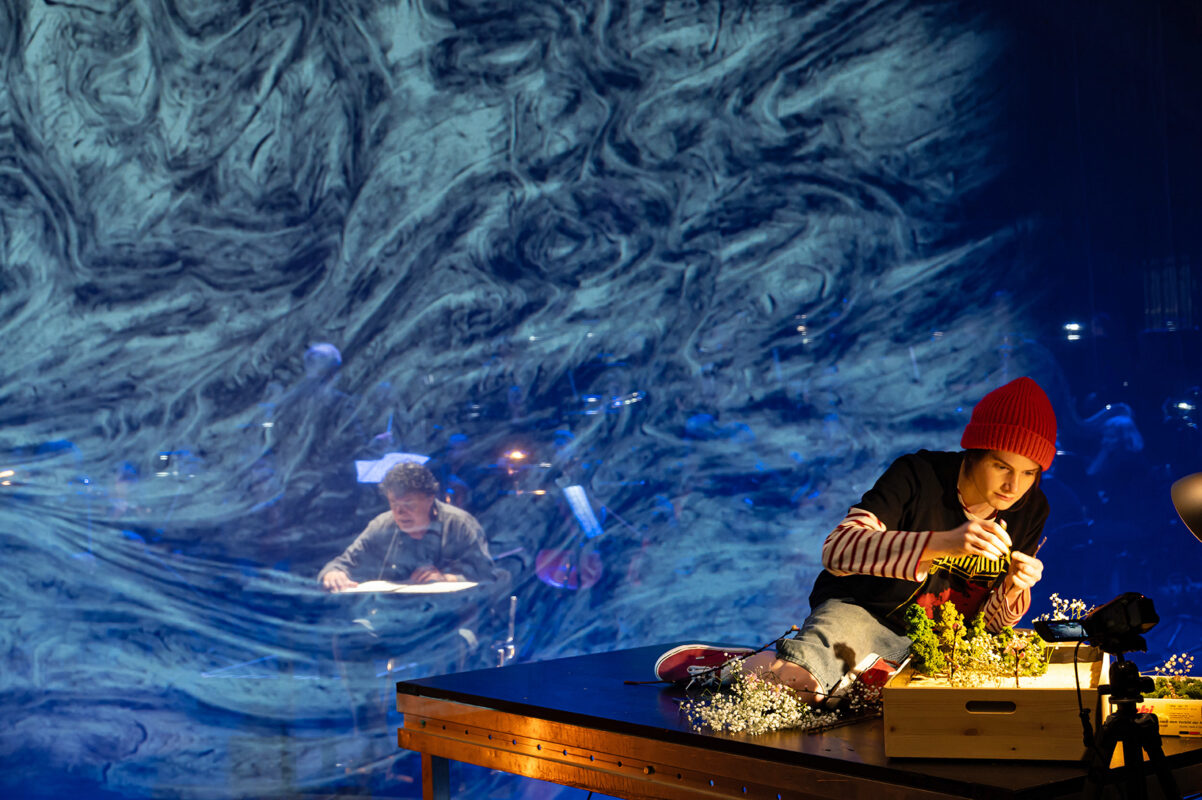Bold new choral concept in Lucerne
Three years ago, the Boys Choir Lucerne performed a "Carmina Burana" in choreographed tableaux. Now it is following up with the same concept: "Bilder (k)einer Ausstellung" in April at Maihof Lucerne.
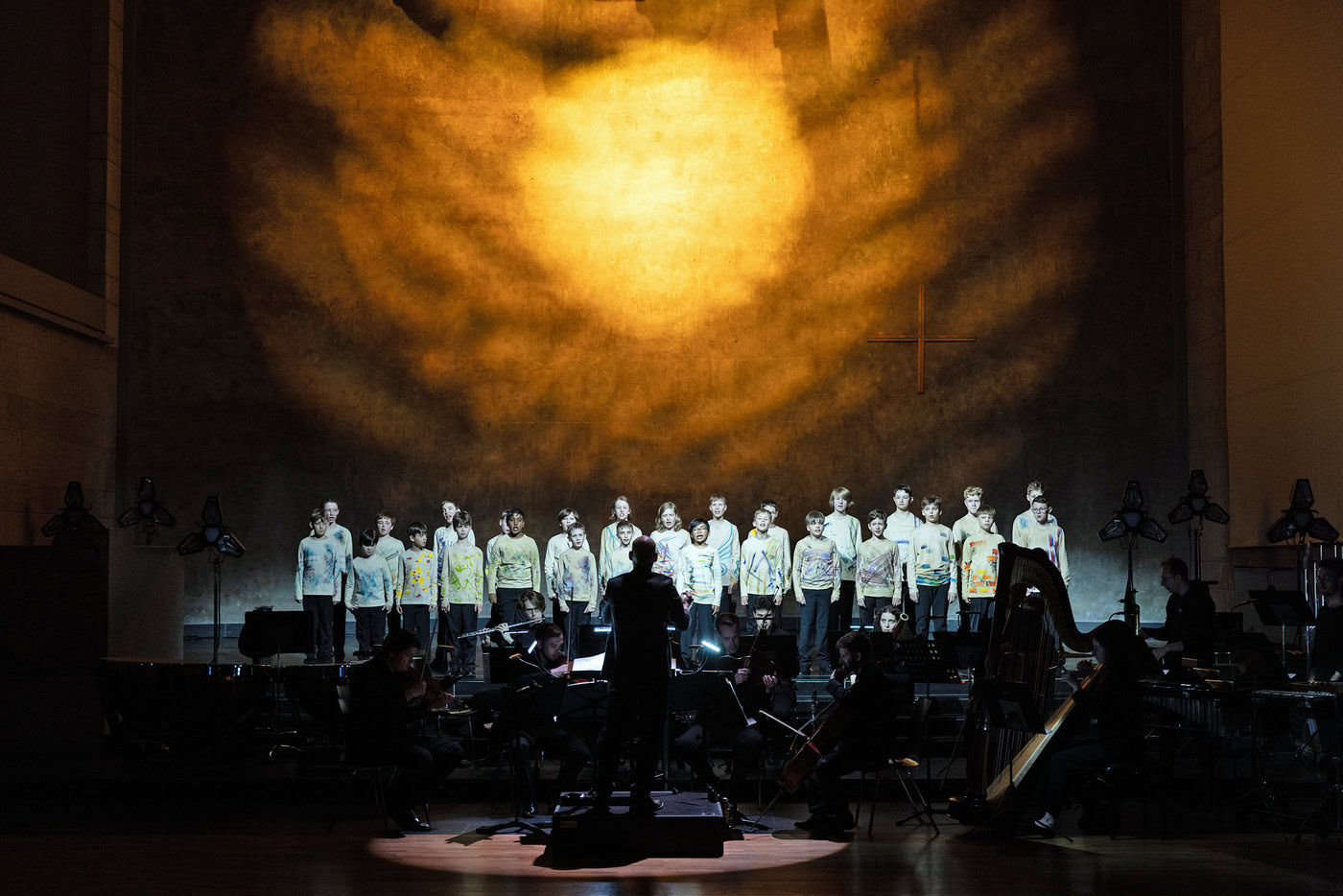
Founded in 2011 by Andreas Wiedmer and Regula Schneider, the Boys Choir Lucerne can look back on a short and impressive success story. Invitations to the European Youth Choir Festival in Basel, the performance of Carmina Burana 2021 at Maihof Lucerne, the Swiss premiere of Les Choristes at the KKL 2023 and much more are evidence of targeted choral work. The identification factor is high. The children stay with the choir until they have broken their voices and usually transfer seamlessly to the men's choir. Thanks to competent and ambitious development work, the boys' and men's voices now form a children's and youth choir that is one of the best in Europe. Especially recently, it has been raining awards. Winning competitions and gold medals at home and abroad has almost become a matter of course.
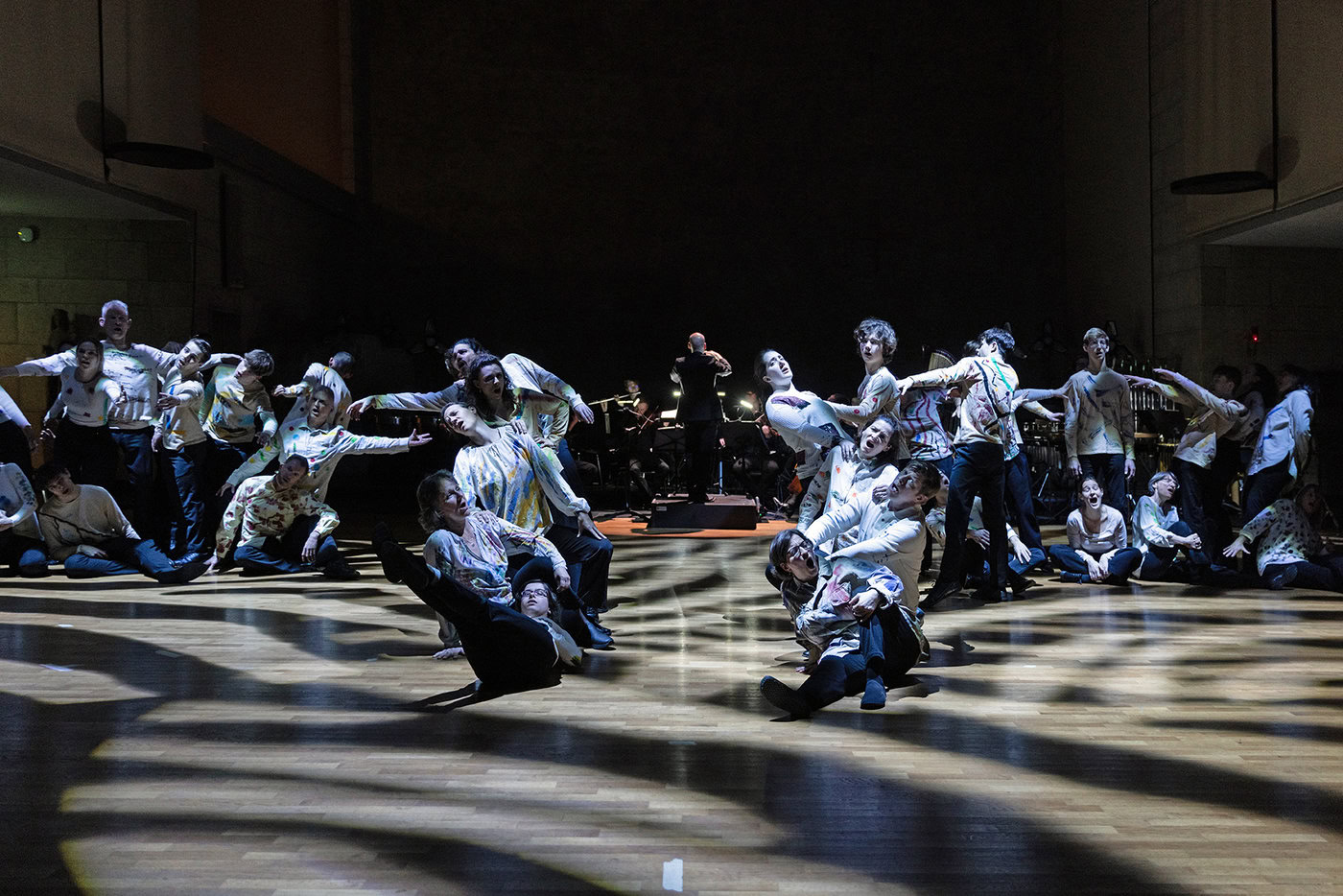
Converting energy
Today, getting boys to sing in a choir requires a different approach than keeping a fidgety bunch quiet and having them recite children's songs from the songbook. "Boys in years 4 to 6 who sing are considered extremely uncool among their peers," says Regula Schneider. She therefore believes it makes sense to look after this age group separately in order to promote their special talents and needs in the best possible way. Boys of this age have a lot of energy. It is important to harness this and convert it into musical energy.
Choirmaster Andreas Wiedmer said in a portrait of the choir in the Star hour music of Swiss television (23.09.23): "Singing has long been a by-product for the boys, they could actually play football as well. It's about being together in a group, being challenged and competing with the others." If they work on the same thing for too long, they quickly get bored. Working towards a goal and being on the same page frequently are important to keep them focused.
Gentle sounds to kick things off
The main event of the concert evening at the Maihof was the world premiere of Modest Mussorgsky's Pictures of an exhibition in the adaptation by Regula Schneider. It was preceded by the Mass of the Children by John Rutter (world premiere, New York 2003), a catchy, musical-like work with the traditional Mass texts, supplemented with additional religious texts. In his time as a boy soprano, Rutter had always found it exciting to be able to take part in a concert together with adults. He therefore later wrote this piece for mixed choir and children's choir.
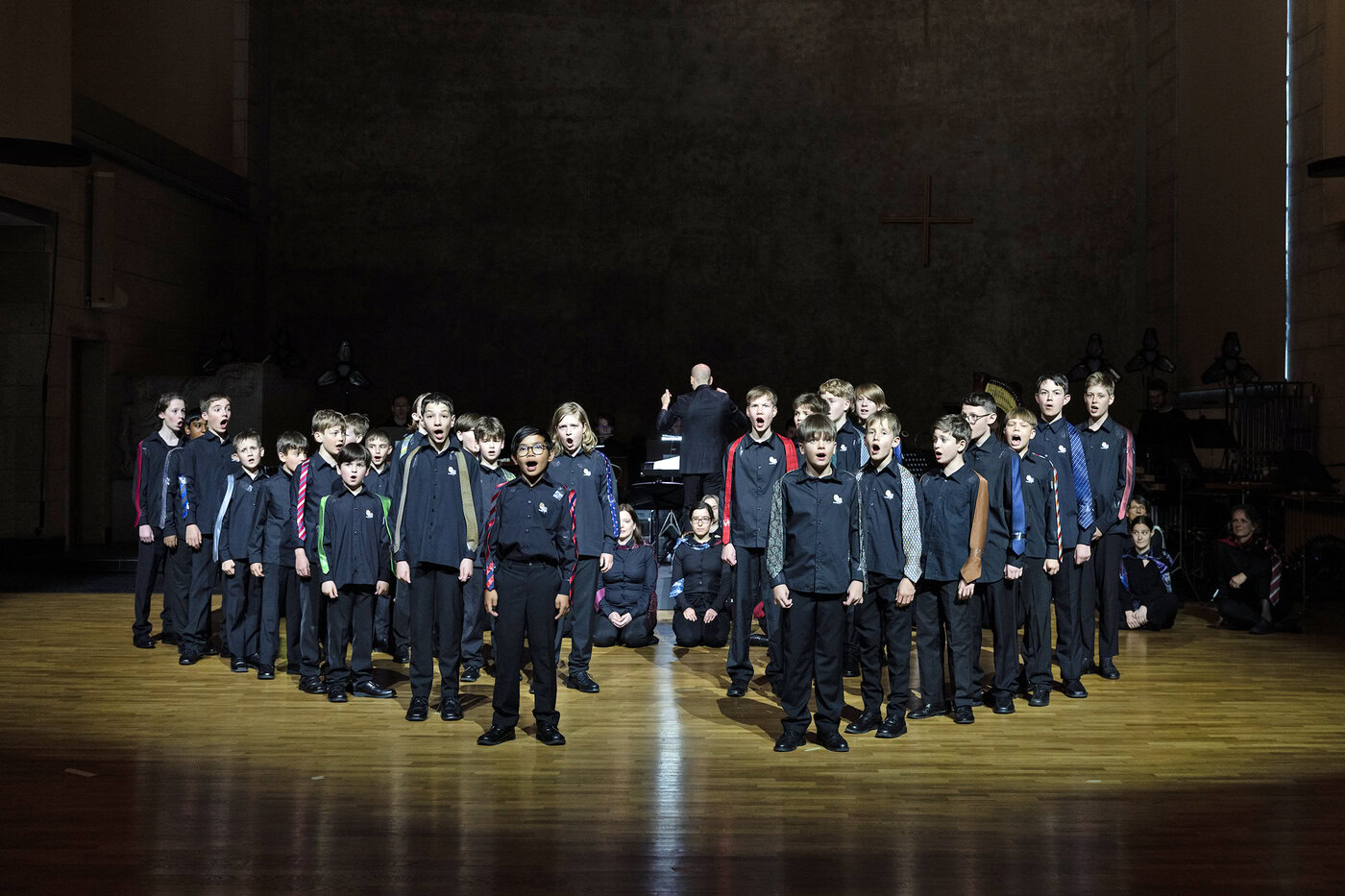
The ad hoc orchestra under the direction of Philipp Hutter sounded precise and blended very well with the singing. Soprano Samantha Herzog, baritone Andreas Wiedmer and choir members Loris Sikora and Jonathan Kionke had melodious solo parts. The character of the piece was illustrated by the mostly soft, graceful movements of the choir. The "Qui tollis" was given a special touch through striking arm movements. The natural stage presence of the young people was striking, which was to become even more accentuated in the following work.
Musical image viewing
For its 10th anniversary in 2021, the choir performed Carl Orff's Carmina Burana on. As an additional challenge, the choir members took on the choreography themselves. Particular emphasis was placed on realizing the imagery of the work. The success of the performance awakened the desire to create another piece in the same style. The path to Pictures of an exhibition of Mussorgsky was not far away, especially as this is a kind of musical visual contemplation. Movements and interpretations of images are already inherent in the music.
Now it was time to incorporate vocals and texts. Regula Schneider took Bruno Peterschmitt's arrangement for chamber orchestra as a template and arranged a vocal score from the melody lines, mostly in unison with a few polyphonic sections. Co-conductor Marcel Fässler wrote a poetic text that could have come from Mussorgsky's imaginary museum visitor. Schneider added vocals to all but one of the images - and it worked! The original keys of the piece proved to be easy to sing. Where it got a little high, the gentlemen elegantly used falsetto. In addition to the 45 or so boys' and men's voices, a women's project choir with a further 25 voices made an appearance.

Clear movement patterns, expressive gestures
Although the music is easy to sing, it is always a challenge to sing and move at the same time. Choreographer Yvonne Sieber refrained from overly complex dance figures and mostly limited herself to clear movement patterns and expressive gestures that clarified the content of the images. A strong lighting direction perfectly emphasized the stage action. After an effective parade of choirs, dwarves scurried across the spacious playing area of the Maihof in the first picture, "Gnomus". In "Tuileries", the boys made a refreshing appearance, while the men and women in "Bydlo" made an impact with the simple motif of hinking.
In the "Ballet of the Unhatched Chicks", the boys once again took center stage. Although they were initially positioned behind the orchestra, their singing sounded present and compact. "Samuel Goldenberg and Schmuyle" was performed by nine men. Jonathan Kionke took the solo with his flawless counter voice. He has been a member of the choir for years and is now studying singing at the Zurich University of the Arts. With expressive arm movements, the performers in the picture "The hut on chicken legs" created associations with the content. "The Great Gate of Kiev" was designed as a monumental final image.
